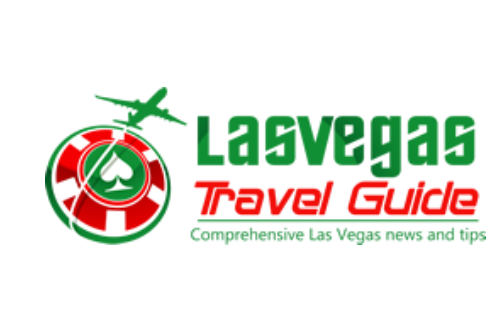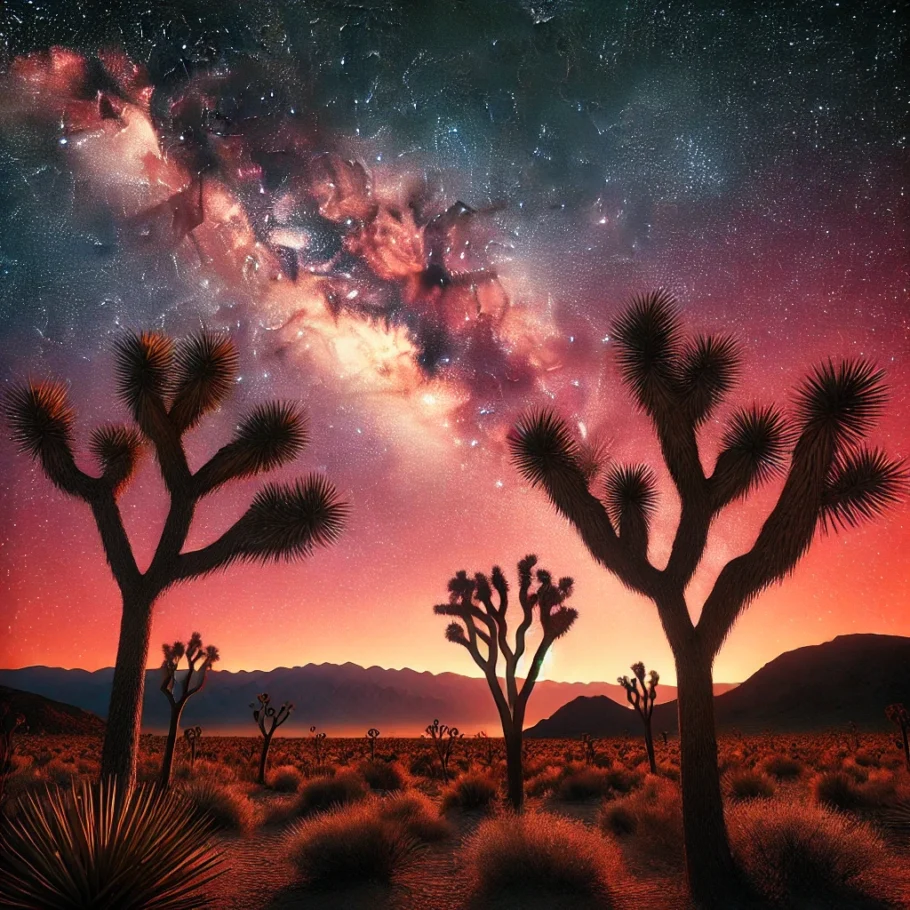If you’ve spent any amount of time in Las Vegas, you know the city’s lights can make the stars above feel like a distant memory. But venture just a little outside the neon glow, and you’ll find some of the best places to stargaze near Las Vegas. Whether you’re a seasoned astronomer or just someone looking to reconnect with the cosmos, there’s a spot for you. From rugged desert landscapes to high mountain peaks, the Mojave Desert offers unparalleled opportunities for stargazing.
Stop right here – Vegas insider tip: Most visitors to this site will overpay by $727+ per trip to Las Vegas. Why? Because they don't have the secrets and tips to keep expenses low in Vegas while having a good time. Want the complete playbook for traveling like a Vegas local? Click here to save money on Vegas trips
Here’s a guide to help you find the most breathtaking stargazing spots, complete with tips and tricks for making the most of your celestial adventures.
Why Stargaze Near Las Vegas?
Las Vegas may be famous for its dazzling nightlife, but the surrounding desert offers some of the best stargazing areas near Las Vegas. The Mojave Desert’s unique combination of clear, dry air and minimal atmospheric interference creates the perfect conditions for a breathtaking view of the cosmos. Escaping the city’s bright lights, even for a short drive, can transport you to a tranquil world filled with stars, constellations, and celestial wonders.

The Unique Desert Sky
- The Mojave Desert is known for its dry air, which reduces atmospheric distortion and enhances star visibility.
- Clear skies are common, with over 290 cloud-free nights per year on average.
- The lack of humidity means stars appear sharper and brighter compared to more humid regions.
- The desert’s natural elevation further reduces light pollution, offering a clearer view of the night sky.
- Visitors often report seeing celestial phenomena like shooting stars, satellites, and even the Milky Way with the naked eye.
Escaping the City Lights
- Las Vegas is notorious for light pollution, but driving 30 minutes to an hour can make a world of difference.
- Surrounding areas have designated dark-sky zones where stargazing is protected and encouraged.
- Stargazing offers a unique, tranquil contrast to the fast-paced energy of the Las Vegas Strip.
- Being in the wilderness at night provides a chance to connect with nature in a way that’s impossible in the city.
- Many stargazing spots are easily accessible and free of charge.
Best Places to Stargaze Near Las Vegas
You don’t have to travel far to discover the great stargazing opportunities near Las Vegas. From iconic desert landmarks to serene mountain retreats, these nearby locations offer incredible opportunities to enjoy the beauty of the night sky. Each spot has its own unique charm, making it easy to find the perfect setting to marvel at the universe and create lasting memories under a canopy of stars.
Red Rock Canyon National Conservation Area
- Located just 20 minutes west of Las Vegas, this spot offers stunning red sandstone formations that frame the night sky beautifully.
- Popular trails like Calico Basin are accessible for night hikes and stargazing.
- The Visitor Center provides information about astronomy events and recommended viewing spots.
- Bring a blanket or reclining chair to set up at designated stargazing areas.
- Be mindful of closing hours; some areas may not allow access after sunset.
Valley of Fire State Park
- Famous for its dramatic red rock formations, this state park is about an hour northeast of Las Vegas.
- Open camping areas allow overnight stays, making it perfect for stargazing enthusiasts.
- Arch Rock and Atlatl Rock provide picturesque settings for night sky photography.
- The park’s remote location minimizes light pollution significantly.
- Rangers occasionally host night sky programs featuring telescopes and guided tours.
Mount Charleston (Spring Mountains National Recreation Area)
- A 45-minute drive from the city brings you to this high-altitude retreat with cooler temperatures and darker skies.
- Lee Canyon and Fletcher View Campground are particularly popular for stargazing.
- The higher elevation reduces atmospheric interference, making celestial objects appear closer.
- Seasonal meteor showers, like the Perseids, are easily visible from this vantage point.
- It’s a great option for combining stargazing with other outdoor activities like hiking or camping.
Sloan Canyon National Conservation Area
- This hidden gem is less crowded and located about 30 minutes south of Las Vegas.
- Known for its ancient petroglyphs, the area offers a blend of cultural and natural beauty.
- The trailheads and open desert provide ample space to set up stargazing equipment.
- The lack of paved roads ensures minimal artificial lighting.
- Early risers can enjoy the transition from stargazing to stunning desert sunrises.
Lake Mead National Recreation Area
- Just 40 minutes from Las Vegas, Lake Mead offers wide-open spaces perfect for stargazing.
- Boulder Beach and Echo Bay are popular spots with easy access and camping facilities.
- The reflection of the night sky on the lake creates a magical experience.
- Frequent astronomy events, including full moon hikes and telescope viewings, are hosted here.
- The vastness of the area allows for private, uninterrupted stargazing sessions.
Tips for Stargazing Near Las Vegas
If you’re planning to go stargazing near Las Vegas, preparation is key. From choosing the ideal time to stargaze to ensuring you have the right equipment, these tips will help you make the most of your nighttime adventure. With a little planning, you can fully enjoy the magic of the desert sky and take in its celestial wonders without a hitch.

Best Times to Go Stargazing
- Winter months offer the clearest skies due to reduced atmospheric dust.
- Avoid stargazing on nights with a full moon, as its brightness can obscure fainter stars.
- Check online for meteor shower dates like the Geminids or Leonids for spectacular night shows.
- Arrive early to set up before twilight; the transition from sunset to full darkness enhances the experience.
- Apps like SkySafari or Star Walk can help identify stars, planets, and constellations during your outing.
Essential Gear for Stargazing
- Bring a telescope or binoculars for a closer view of planets and deep-sky objects.
- A red flashlight preserves your night vision while helping you navigate.
- Warm clothing and blankets are essential, as desert nights can get chilly even in summer.
- Snacks, water, and a thermos of hot coffee or tea make long nights more comfortable.
- A reclining chair or portable cot ensures you can relax while looking up at the stars.
Staying Safe While Stargazing
- Always let someone know your plans, especially if heading to remote areas.
- Carry a fully charged phone and a backup battery pack.
- Be aware of local wildlife, including snakes and coyotes, which are more active at night.
- Respect the environment by following Leave No Trace principles.
- Bring a GPS or map in case cell service is spotty in the wilderness.
Stargazing Events Near Las Vegas
For a more interactive experience, consider attending stargazing events at some great stargazing places near Las Vegas. These events often include expert-guided tours, telescope viewings, and opportunities to witness special celestial phenomena. Whether you’re a beginner or a seasoned stargazer, these gatherings make exploring the night sky even more rewarding and memorable.
Public Astronomy Nights
- Local organizations like the Las Vegas Astronomical Society host regular star parties.
- Events often include telescope setups and guided tours of the night sky.
- Beginners can learn about stargazing techniques and celestial objects.
- Public events are typically free or require a small donation.
- Locations vary but often include Red Rock Canyon or Lake Mead.
Photography Workshops
- Specialized workshops teach techniques for capturing the Milky Way and constellations.
- Held in areas like Valley of Fire or Mount Charleston.
- Instructors provide hands-on guidance for using cameras and lenses in low-light settings.
- Great for photographers looking to expand their skills or build a portfolio.
- Some workshops also offer post-processing tutorials to enhance your images.
Meteor Shower Viewing Parties
- Hosted during major celestial events like the Perseids, Geminids, or Orionids.
- Ideal for families or groups who want to experience the awe of multiple shooting stars.
- Bring cozy seating and prepare for a night of wonder under the stars.
- Events often include commentary from experts explaining the science behind meteor showers.
- Locations like Red Rock Canyon or Sloan Canyon are popular for these gatherings.
What to Expect at Each Stargazing Spot
The best stargazing places near Las Vegas each offer a unique atmosphere and set of experiences. Whether you’re looking for rugged desert landscapes or serene mountain retreats, there’s a stargazing destination to suit your preferences. Here’s what you can expect at some of the most popular spots:
Stop right here – Vegas insider tip: Most visitors to this site will overpay by $727+ per trip to Las Vegas. Why? Because they don't have the secrets and tips to keep expenses low in Vegas while having a good time. Want the complete playbook for traveling like a Vegas local? Click here to save money on Vegas trips

Red Rock Canyon National Conservation Area
- Dramatic desert landscapes: The striking red sandstone formations create a stunning backdrop, especially when silhouetted against the starry sky.
- Quiet and close to the city: Just 20 minutes from Las Vegas, it offers quick access while feeling far removed from the hustle and bustle.
- Photography opportunities: The contrast of the dark night sky with the red rock formations is perfect for astrophotography.
- Limited light pollution: While not as dark as more remote spots, it’s still significantly better than the city for stargazing.
- Seasonal access: Some areas may close at night or require permits, so check ahead before planning your trip.
Valley of Fire State Park
- Eerie beauty: The park’s ancient, fiery-red rock formations add an otherworldly charm to the stargazing experience.
- Camping options: Overnight camping is allowed, giving you plenty of time to explore the night sky.
- Dark skies: Located about an hour from the city, the park has minimal light pollution, making it one of the darkest spots near Las Vegas.
- Star photography hotspots: Locations like Arch Rock and Atlatl Rock are ideal for capturing dramatic night sky images.
- Ranger programs: During certain times of the year, rangers host astronomy nights and star tours.
Mount Charleston (Spring Mountains National Recreation Area)
- Cooler temperatures: This high-altitude spot is a refreshing escape from the desert heat, especially during summer nights.
- Forest setting: The mix of towering pines and open clearings makes for a unique stargazing environment.
- High elevation: At over 7,000 feet, Mount Charleston offers some of the clearest and most stable skies in the region.
- Trail access: Stargazers can hike to scenic viewpoints like Cathedral Rock for even better celestial views.
- Winter stargazing: During the colder months, snow adds an extra layer of magic to the experience.
Lake Mead National Recreation Area
- Water reflections: The vast lake provides a shimmering reflection of the stars, enhancing the visual impact.
- Accessible locations: Boulder Beach and Echo Bay are popular and easy to reach stargazing spots.
- Relaxing atmosphere: Combine stargazing with a leisurely lakeside evening.
- Astronomy events: The park often hosts stargazing programs with telescopes and expert-led sky tours.
- Wildlife encounters: Keep an eye out for nocturnal animals like owls or desert foxes as you enjoy the stars.
Sloan Canyon National Conservation Area
- Secluded and peaceful: This lesser-known spot is perfect for those seeking solitude under the stars.
- Historical significance: The area’s ancient petroglyphs add a cultural dimension to your visit.
- Undisturbed views: The lack of development ensures minimal light pollution.
- Great for hiking: Combine your stargazing trip with a sunset hike for a full evening of outdoor exploration.
- Stunning desert vistas: The wide-open landscape offers unobstructed views of the night sky.
Family-Friendly Stargazing Ideas
Stargazing is a fantastic activity for families, offering a chance to bond while exploring the wonders of the universe. The best stargazing places provide safe, engaging environments that kids and adults alike will enjoy. Here are some family-friendly ideas to make your stargazing adventure even more memorable:
Create a Constellation Scavenger Hunt
- Interactive learning: Prepare a list of constellations or planets for your kids to spot in the night sky.
- Use apps for guidance: Free stargazing apps like Star Walk or SkyView can help identify celestial objects.
- Bring star maps: Teach kids how to use traditional star charts for an educational twist.
- Offer rewards: Small prizes like glow-in-the-dark stickers can make the activity more engaging.
- Involve storytelling: Share myths and legends about the constellations as you find them.
Turn Stargazing Into a Mini Camping Trip
- Choose a safe location: Spots like Valley of Fire or Lake Mead offer designated camping areas.
- Pack essentials: Bring tents, sleeping bags, and warm clothing for a cozy night under the stars.
- Include snacks: S’mores, hot chocolate, or trail mix can add to the fun.
- Tell campfire stories: Share tales about the cosmos while sitting around the fire.
- Combine activities: Plan a daytime hike or visit nearby attractions to round out the experience.
Spot Planets and Shooting Stars
- Focus on visible planets: Jupiter, Saturn, and Venus are often bright enough to spot without a telescope.
- Look for meteor showers: Plan your trip around events like the Perseids or Geminids for a spectacular show.
- Use binoculars: Kids will love seeing craters on the moon or details on planets.
- Track satellites: Many apps can predict when and where satellites like the ISS will appear.
- Celebrate discoveries: Create a checklist for each celestial object spotted during the outing.
Host a Nighttime Picnic
- Set the scene: Spread out blankets at Red Rock Canyon, or another outdoor space with great views.
- Pack a themed meal: Include “star-shaped” sandwiches or cookies to make it extra fun.
- Bring lanterns: Use dim, red-light lanterns to preserve your night vision while eating.
- Play music or audiobooks: Choose space-themed tracks or educational audiobooks about astronomy.
- Relax and enjoy: Stargazing picnics are a great way to unwind and connect with the night sky.
Encourage Kids to Keep a Stargazing Journal
- Document discoveries: Have children write down the stars, planets, or constellations they see.
- Add drawings: Encourage them to sketch the night sky as they observe it.
- Track celestial events: Record dates and details of meteor showers, eclipses, or other phenomena.
- Reflect on the experience: Prompt them to describe how stargazing made them feel.
- Inspire future exploration: A journal can spark curiosity and encourage learning about astronomy.
By incorporating these ideas, your family can enjoy a fun and educational stargazing adventure at some great places near Las Vegas.
Exploring the Cosmos: The Best Places to Stargaze Near the City

The glittering lights of Las Vegas may captivate millions, but just beyond the neon glow lies a world of natural wonder. The best stargazing places offer an unparalleled opportunity to escape the city’s hustle and immerse yourself in the beauty of the cosmos. Whether you choose the red rock landscapes of Valley of Fire, the tranquil shores of Lake Mead, or the high-altitude vistas of Mount Charleston, each spot provides a unique and breathtaking stargazing experience.
Stargazing near Las Vegas isn’t just about admiring the stars; it’s about connecting with nature, finding peace in the vastness of the desert night, and creating memories that last a lifetime. For families, it’s a chance to bond and spark curiosity in young minds. For photographers and astronomy enthusiasts, it’s an opportunity to capture the universe in all its glory. And for anyone feeling overwhelmed by the city’s constant energy, it’s a reminder of the quiet beauty that exists just a short drive away.
No matter your level of expertise or your reasons for seeking the stars, the desert skies near Las Vegas are calling. Pack your gear, bring a sense of wonder, and head to a place that offers stargazing opportunities. The stars have been waiting for you, and their brilliance will leave you in awe.





